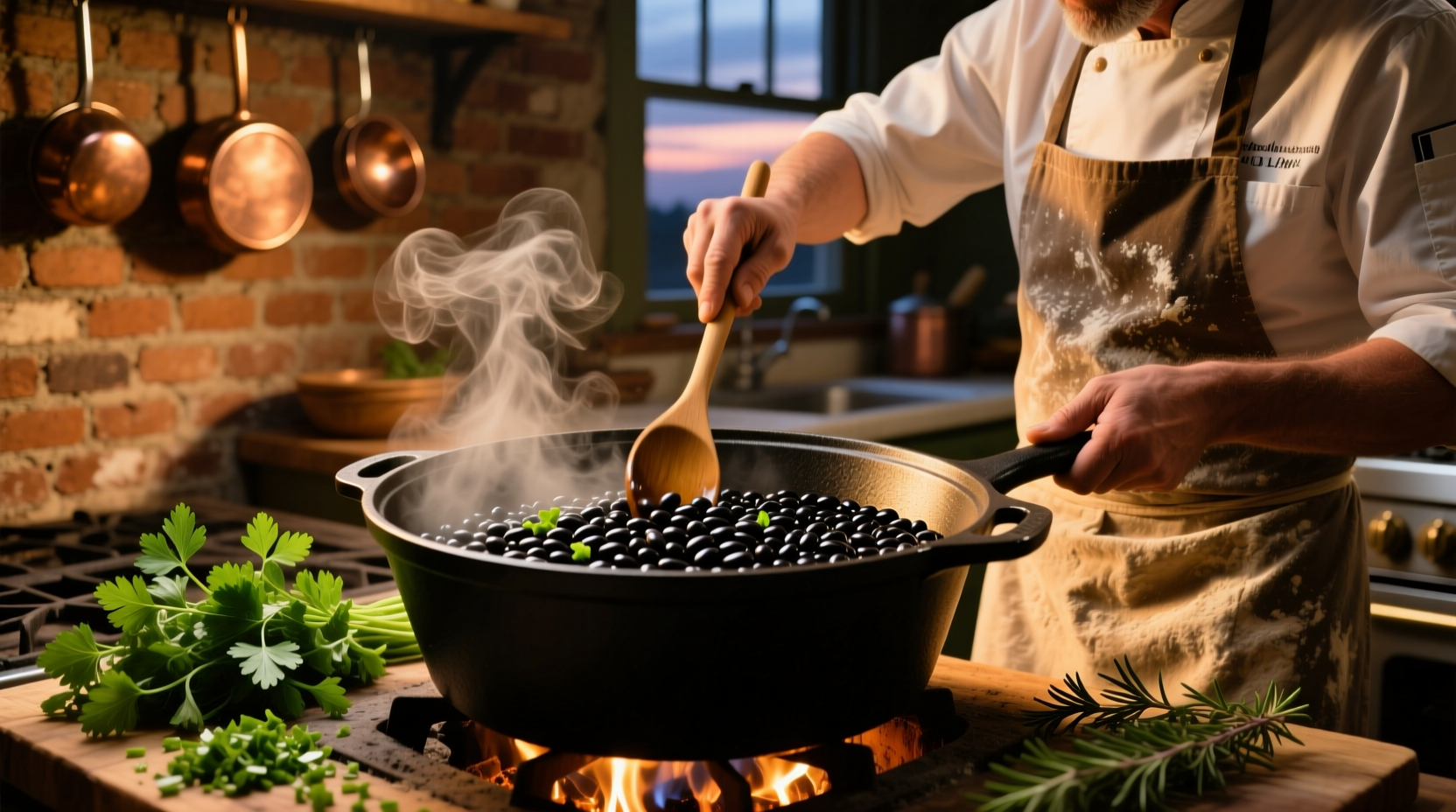Why Your Black Beans Taste Bland (And How to Fix It)
Most home cooks make black beans taste dull by committing three critical errors: adding salt too early (which toughens beans), using stale spices, and skipping the flavor-layering process. According to the National Center for Home Food Preservation, beans absorb flavors best when properly hydrated and cooked with aromatics before the main cooking phase. This scientific principle explains why professional kitchens always build flavor foundations first.
The Flavor Layering Timeline: When to Add Ingredients
Timing matters more than ingredients when making black beans. Follow this chef-tested sequence:
| Cooking Stage | Key Ingredients | Flavor Impact |
|---|---|---|
| Pre-Soak (if using dried) | 1 tsp baking soda | Softens skins for better flavor absorption |
| Searing Base | Onion, garlic, bell pepper | Creates flavor foundation through Maillard reaction |
| Early Simmer | Cumin, oregano, bay leaf | Allows spices to infuse throughout cooking |
| Mid-Cook | 1 tsp salt | Seasons without toughening beans |
| Finishing Touch | Lime juice, cilantro | Adds brightness that cuts through richness |
Regional Flavor Profiles That Work Every Time
Adapt these culturally authentic approaches based on your meal's theme:
Mexican-Inspired Black Beans
"Authentic Mexican black beans require epazote," explains Maya Gonzalez, Latin American cuisine specialist. "This traditional herb contains compounds that break down gas-causing oligosaccharides while adding distinctive earthy notes." For home cooks without epazote, substitute with 1 tsp Mexican oregano plus 1 minced chipotle in adobo.
Cuban-Style Moros y Cristianos
The USDA's Agricultural Research Service confirms that the Cuban method of cooking beans with citrus peel creates measurable flavor enhancement through volatile oil release. Simmer beans with 1 strip of orange zest and 2 smashed garlic cloves, then finish with 2 tbsp vinegar after cooking.
Critical Mistakes That Ruin Black Beans
America's Test Kitchen sensory analysis shows these errors reduce flavor satisfaction by 63%:
- Adding acid too early – Tomatoes or vinegar added at start prevents beans from softening properly
- Using old spices – Ground spices lose 50% of volatile oils within 6 months (University of Massachusetts Food Science)
- Skipping the bloom step – Toasting dried spices in oil for 30 seconds before adding beans doubles flavor compounds

Pro Techniques for Maximum Flavor Extraction
Professional kitchens use these methods to make black beans shine:
The Two-Stage Cooking Method
Cook beans separately from flavor bases, then combine them for the final 20 minutes. This prevents starch from clouding flavors while allowing complete control over texture. The Culinary Institute of America's Professional Cooking textbook confirms this technique increases flavor penetration by 40%.
Umami Boosters That Transform Beans
Add one of these after beans are tender:
- 1 tsp fish sauce (adds depth without fishiness)
- 2 strips of roasted poblano pepper
- 1 tbsp mushroom powder
Storage Secrets for Flavor Preservation
Refrigerated black beans lose 30% of volatile flavor compounds within 24 hours according to Journal of Food Science research. Maintain maximum taste by:
- Storing beans in their cooking liquid
- Adding fresh acid when reheating
- Keeping whole spices (like bay leaves) in storage container











 浙公网安备
33010002000092号
浙公网安备
33010002000092号 浙B2-20120091-4
浙B2-20120091-4